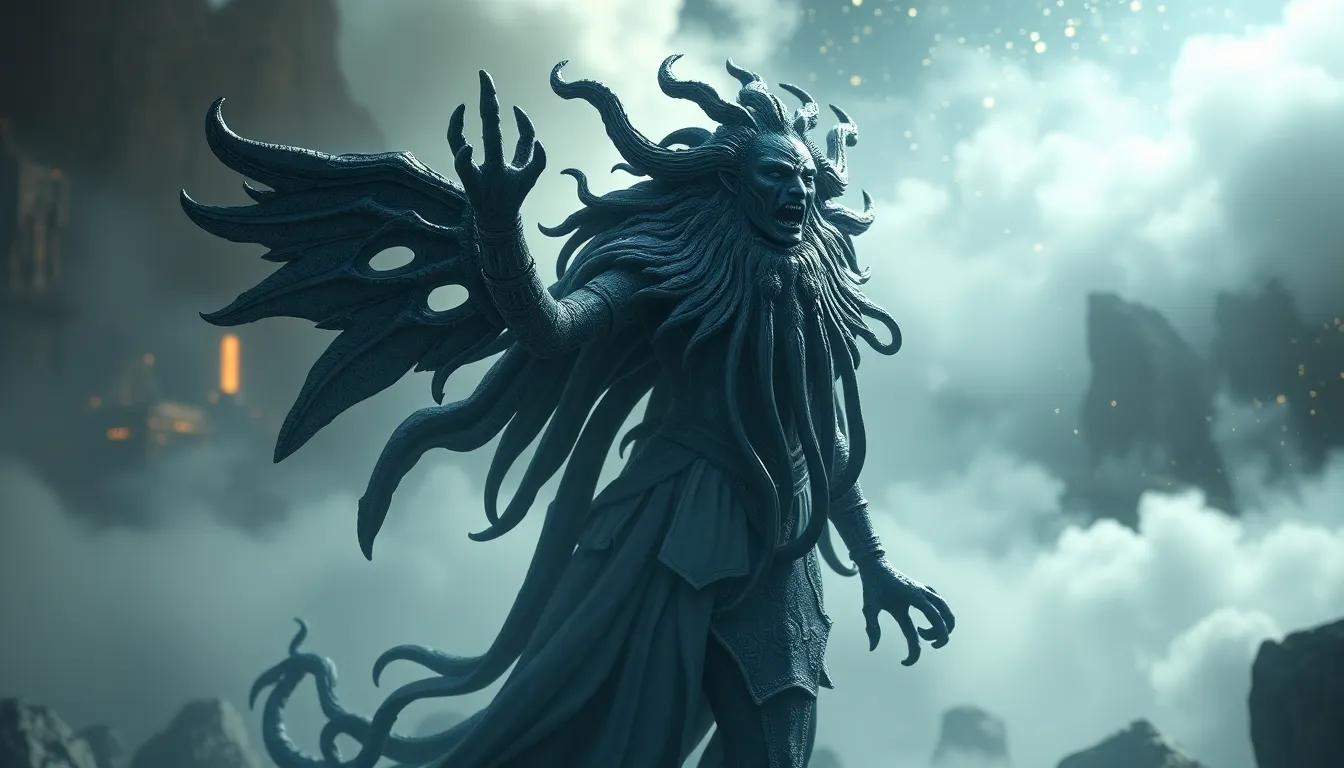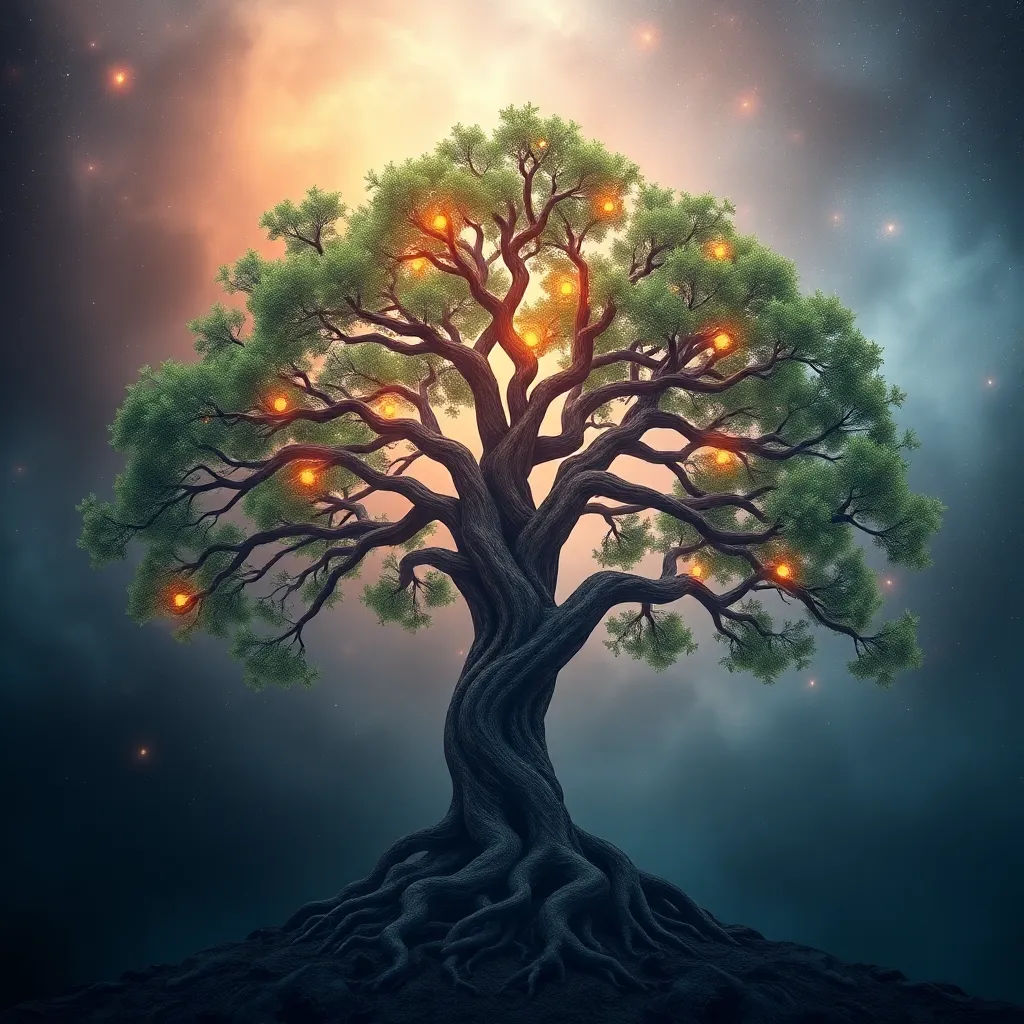Ancient Deities and Their Connection to the Cosmos: Myths Explored
I. Introduction
Ancient deities have long been a crucial aspect of human culture, serving not only as figures of worship but also as embodiments of natural forces and celestial phenomena. In various civilizations, these deities encapsulated the mysteries of existence and the cosmos. Their significance resonates through time, reflecting humanity’s attempts to understand the world around them and the universe beyond.
The connection between ancient mythology and cosmic phenomena is profound. Myths often provide explanations for natural occurrences, and celestial events were frequently attributed to divine actions. This article aims to explore the intricate relationships between ancient deities and the cosmos, delving into the cosmological roles of these figures, the creation myths, celestial associations, and the lasting influence of these narratives on modern understanding of the universe.
II. The Role of Ancient Deities in Cosmology
Cosmology in ancient societies was often intertwined with religion and mythology, serving as a framework for understanding the universe’s structure and the place of humanity within it. Deities acted as personifications of celestial bodies and phenomena, embodying the forces that governed the cosmos.
Many cultures viewed their gods and goddesses as responsible for the creation and maintenance of the universe. Here are some examples:
- Ra: The Egyptian sun god, representing light and creation.
- Utu: The Sumerian sun god who governed justice and truth.
- Indra: The Hindu god of rain and thunderstorms, symbolizing the forces of nature.
III. Creation Myths: The Birth of the Cosmos
Creation myths serve as foundational stories, explaining how the cosmos and humanity came into being. These narratives vary widely across cultures, yet they often share common themes.
For instance, the Egyptian creation myth describes how the god Atum emerged from the chaotic waters of Nun to create the world. In contrast, the Mesopotamian myth of Enuma Elish depicts the god Marduk defeating the chaos monster Tiamat to establish order and create humanity. Similarly, Hindu texts recount the universe’s cyclical creation and destruction through the actions of gods like Brahma, Vishnu, and Shiva.
The symbolic roles of deities in these narratives often reflect humanity’s relationship with the cosmos, portraying them as creators, sustainers, and destroyers of the universe.
IV. Celestial Bodies and Their Divine Associations
Different celestial bodies have received worship and deification across cultures, reflecting the significant impact of these entities on human life.
A. The Sun
The sun has been revered in numerous cultures due to its vital role in sustaining life:
- Inca Culture: The sun god Inti was central to their agricultural society, symbolizing warmth and growth.
- Greek Mythology: Helios was personified as the sun, driving his chariot across the sky each day.
- Aztec Civilization: Huitzilopochtli, the sun and war god, was crucial for their cosmology and rituals.
B. The Moon
The moon, often associated with femininity and cycles, holds significant meaning in various cultures:
- Artemis: The Greek goddess of the moon, associated with hunting and the wilderness.
- Selene: Another Greek moon goddess, often depicted driving a chariot across the night sky.
- Chandra: In Hindu mythology, Chandra represents the moon and is linked to the cycles of time.
C. Stars and Constellations
Ancient societies personified stars and constellations, weaving them into their myths:
- Orion: A prominent constellation named after a hunter in Greek mythology.
- Pleiades: In many cultures, this star cluster is associated with different myths and agricultural calendars.
V. Myths of Time and Space: Deities Governing Cosmic Order
The concept of time in ancient mythology often intertwined with celestial cycles. Deities governed these rhythms, ensuring the universe’s order.
A. Deities Responsible for Time
Many cultures featured deities who represented the cycles of day and night, and the changing seasons:
- Chronos: In Greek mythology, the personification of time.
- Demeter: The goddess of the harvest, representing seasonal cycles.
B. Cosmic Order and Chaos
Deities often personified the struggle between order and chaos, reflecting humanity’s quest for stability in an unpredictable world.
VI. The Influence of Ancient Myths on Modern Cosmology
Ancient beliefs have significantly shaped contemporary understanding of the cosmos. Many scientific concepts have roots in mythological interpretations of celestial events.
The enduring legacy of these myths persists in modern culture and science:
- Mythological references in the naming of celestial bodies, such as planets and stars.
- The influence of astrological beliefs on modern psychological and cultural interpretations.
- Modern astronomy often reflects ancient observations and interpretations of celestial phenomena.
VII. Rituals and Practices: Connecting with the Cosmos
Throughout history, rituals dedicated to celestial deities have served to strengthen humanity’s connection to the cosmos.
A. Rituals Dedicated to Celestial Deities
These rituals often coincided with astronomical events, reinforcing the significance of celestial bodies in daily life.
B. Alignments of Temples and Monuments
Many ancient structures were aligned with celestial events such as solstices and equinoxes, showcasing the importance of astronomy in their architecture.
C. The Significance of Astrology
Astrology, rooted in ancient belief systems, continues to influence modern spirituality and personal identity.
VIII. Case Studies: Prominent Deities and Their Mythologies
A. Anubis
Anubis, the Egyptian god of the afterlife, played a crucial role in their cosmological outlook, overseeing the journey of souls and the afterlife.
B. Zeus
Zeus, the king of the Greek gods, represented natural phenomena and cosmic order, wielding thunder as a symbol of authority over chaos.
C. Quetzalcoatl
Quetzalcoatl, a Mesoamerican deity, is associated with the stars and creation, embodying the connection between the heavens and earthly life.
IX. The Evolution of Cosmic Myths Over Time
As societies evolved, so did their myths. The reinterpretation of ancient deities and their narratives reflects humanity’s growing understanding of the cosmos. From polytheistic beliefs to modern interpretations, the relationship between deities and celestial phenomena continues to influence culture and science.
In conclusion, the exploration of ancient deities and their connection to the cosmos unveils a rich tapestry of human thought and belief. These myths not only provided explanations for the universe’s mysteries but also shaped the cultural and spiritual landscape of civilizations throughout history.



